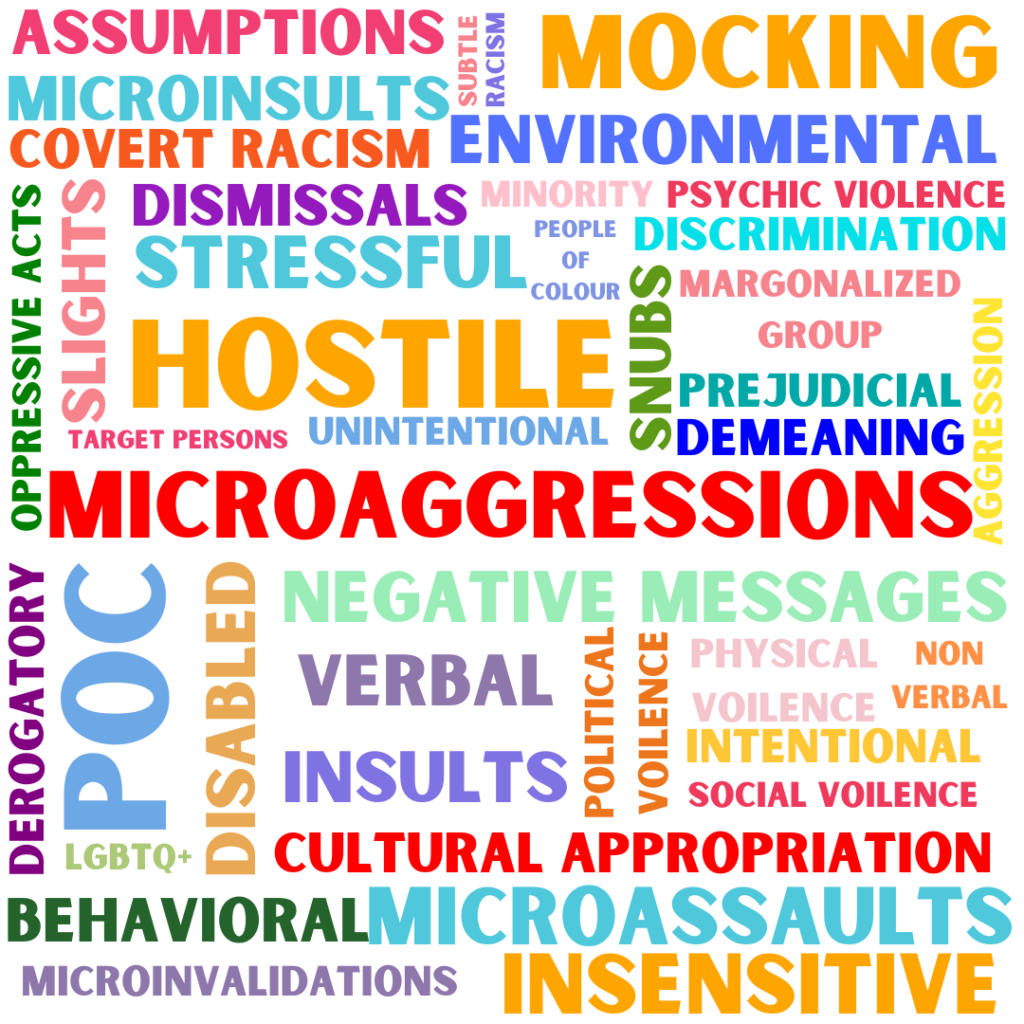In today’s diverse society, it is crucial to address and eliminate behaviours that perpetuate discrimination and inequality. Microaggressions, although often subtle, can have a profound impact on individuals who experience them. This blog post aims to shed light on microaggressions, provide examples to help identify them, and offer advice on how to respond when experiencing microagressions.
Understanding Microaggressions:
Microaggressions refer to everyday verbal or nonverbal slights, snubs, or insults that sudtly communicate derogatory or negative messages to marginalized groups. They often stem from implicit biases and reflect ingrained stereotypes. While they may be unintentional, their cumulative effect can be harmful and contribute to a hostile environment.
Examples of Microaggressions:
1. Racial Microaggression: Asking a person of color, “where are you really from?” implies they are not truly Canadian and perpetuates the idea that being non-white makes them foreign or “other.”
2. Gender Microaggression: Interrupting or speaking over a woman in a professional setting suggests that her voice is less important or valuable than that of her male counterparts.
3. LGBTQ+ Microaggression: Making jokes or using derogatory slurs based on sexual orientation, such as saying “that’s so gay,” reinforces stereotypes and creates a hostile environment.
4. Ableism Microaggression: Assuming that a person with a disability needs help without asking first, disregarding their autonomy, reinforces the idea that they are incapable or inferior.
Responding to Microaggressions:
1. Reflect: Take a moment to recognize the microaggression and how it made you feel. Understand that you have the right to address it and that it is not your responsibility to educate the person responsible, but you can choose to if you wish.
2. Choose Your Response: Consider the context, your relationship with the person, and your own comfort level before responding. Possible options include:
– Confrontation: Calmly express that the comment or behavior was hurtful and explain why. Use “I” statements to communicate your feelings without attacking the person.
– Educate: If you feel comfortable, provide factual information about the impact of microaggressions and why they are harmful.
– Seek Support: Reach out to trusted friends, colleagues, or allies who can provide guidance, understanding, and validation.
3. Set Boundaries: Make it clear that you will not tolerate further microaggressions by establishing boundaries and requesting respectful communication in the future.
4. Report if Necessary: If the microaggression occurs in a professional or academic setting, consider reporting it to the appropriate authority or HR department, ensuring that the incident is documented and addressed.
Microaggressions perpetuate stereotypes, discrimination, and inequality. By understanding and identifying these subtle acts, we can take steps to address them. Responding to microaggressions with assertiveness, education, and seeking support can contribute to a more inclusive and respectful society. Remember, change starts with individual actions, and by advocating for equality we can create a more inclusive future for all.




